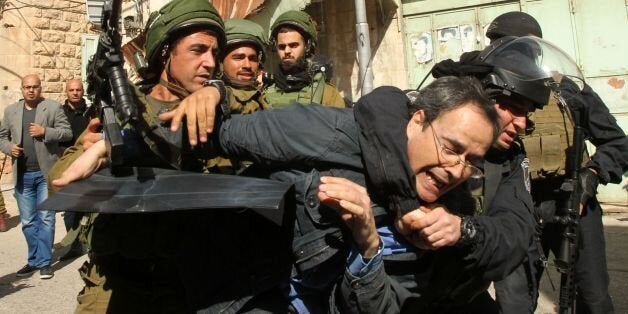
Last fall, news of attacks between Palestinians and Israeli Jews flashed suddenly across news headlines and then, by the new year, had almost disappeared. Palestinians wielding knives stabbed civilian Jewish Israelis in Jerusalem. Groups of Israelis marched with signs reading "Death to Arabs" and beat up Palestinians. Israeli soldiers demolished the homes of accused Palestinian assailants.
Such attacks continue, but have almost disappeared from news coverage. In conversations with colleagues, students, and friends, I have found many expressing a sense of disappointment, but not surprise, at such violent events. The Middle East is "a violent region," or these are "violent peoples," many reasoned, so it is not surprising that such destruction and killings will break out periodically. With such expectations of inevitable conflict, we risk giving up and ignoring the problems. If the region and its people are naturally violent and have always been so, why bother facilitating diplomacy?
When news reports and analyses about the struggle depict tit-for-tat violence and retaliation between Jews and Palestinians they miss crucial inequalities that have been created through the region's particular history. And readers are blinded to real causes and potential solutions.
A narrow focus on a recent dramatic event cannot truly clarify how and why a Palestinian East Jerusalem resident stabbed a Jewish Israeli teen in the street or how and why a crowd of Jewish Israelis mistook an Eritrean man for a Palestinian and shot and beat him to death. Instead, as I have come to see clearly during more than a decade of anthropological research in the region, anyone wishing to understand conflicts between Jews and Arabs must keep in mind what happened not only in 2015, but also in 1948. Likewise, one dramatic event between individuals makes little sense without knowing the social and political context within which they acted. Much of my research focuses on one area within Israel, the Negev region that constitutes the country's southern half. The region's residents include Jews and those people variously labeled "Bedouins," "Palestinians," or "Arabs." All are citizens of Israel.
Social enmity simmers between these factions, often in less dramatic forms like prejudicial language or employment discrimination, but also through violence and home demolitions. However, people are not born with a sense of belonging to one of these groups and ill feelings toward the other. Rather, group boundaries themselves and the points of contention between them are shaped by both individual life experiences and institutional norms, immediate and historical events. In the case of land conflict, Jewish citizens are legally able to farm and own rural lands, but Bedouin citizens cannot do so. However, there are no current laws explicitly granting certain rights to Jews and barring them from Bedouins. Instead, laws written by Zionist political leaders soon after Israel's establishment in 1948 recognized the style of land ownership practiced by immigrating Jews and rendered illegal the ownership norms of Bedouin families who had lived in the Negev for generations. Several decades of separate schools and other public services and differential access to governmental decision making and funding have entrenched divisions between Bedouins and Jews. Knowing this history is crucial to understanding the current struggles between these residents and finding viable solutions. Likewise, actions taken over the last several decades have created important distinctions between citizens of Israel, Palestinian residents of East Jerusalem, and West Bank Palestinians, which allow some to participate in government, travel freely, and live in well-provisioned neighborhoods and deny these possibilities to others. Israeli laws, physical divisions like the Israeli-built Separation Barrier, and the military occupation in the West Bank are establishing these divisions ever more firmly. Meanwhile, some leaders, who identify as Jewish or Muslim, Zionist or Palestinian, call on their constituencies to take up arms. Enflaming mistrust and aggression often buoys leaders' own bids for power. The apparent enmities between "Jews" and "Arabs," "Israelis" and "Palestinians" have been created and fortified through legal and political maneuvers over the last several decades, not since time immemorial. And even with these legal and political developments, cooperative relationships can and do exist. Many Jews and Palestinians not only tolerate each other peacefully, but actively work together on initiatives like The Villages Group, B'tselem, and the intentional community of Wāħat as-Salām (Neve Shalom), trying to counteract inequalities and divisions. These are not two inevitably opposed groups in everlasting conflict. Viewing them as such makes the violence dangerously simple to ignore, allowing a status quo that only deepens this conflict daily. Neglecting political inequalities and the history that produced them also points us toward ethically unsound and counterproductive "solutions" such as repression, eviction, and warfare. Instead, attending to the social and political context that has set the stage for violence in and around Jerusalem is a prerequisite for developing just resolutions. Emily McKee, author of Dwelling in Conflict: Negev Landscapes and the Boundaries of Belonging, is an Assistant Professor in Northern Illinois University's Department of Anthropology and Institute for the Study of the Environment, Sustainability, and Energy.
